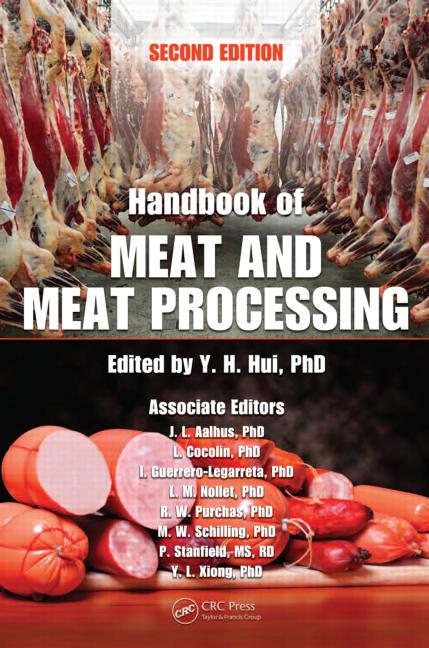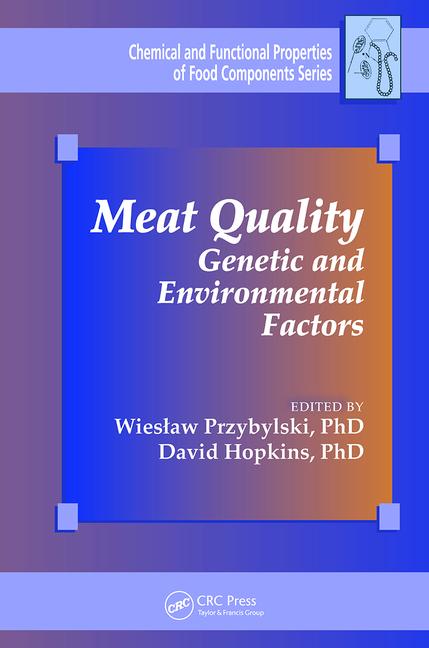Quiet time on an airplane without electronics or reading materials can be dangerous for wandering minds like mine. Lucky you! I was in such a situation just last week, and I started thinking about the similarities between the human body and center-of-plate proteins when it comes to aging, and respective precautions and treatments. There are more similarities than you would imagine (or want to).

|
Both humans and proteins have increased stress levels compared to just 20 years ago. I am sure you know the human ones. For proteins, the list includes long-distance distribution networks, convenience-craving consumers who want fresh flavor and the demand for simple, all-natural ingredient legends. Interestingly, just like for humans, antioxidants can be effective ingredients for defying the aging process.
For example, rosemary extract is a concentrated source of carnosic acid, a potent antioxidant that slows the development of oxidative rancidity in protein. Oxidative rancidity leads to off-flavor development and unattractive discoloration. Rosemary extracts are typically standardized by carnosic acid concentration, giving processors flexibility to formulate the most effective solution. Available in powder and liquid form, the rosemary extract can be dispersed in brine and injected into protein cuts or dispersed into a solution with other flavors and sprayed on topically. There’s always the option to dry-blend the powdered form with seasonings and apply it topically by either tumbling or through a batter. It can also be added directly to the blender, mixer or mincer.
Most humans are not spraying rosemary extract on their skin. But there is another well-established antioxidant that has been shown to delay the onset of oxidative rancidity in protein as well as slow down visible signs of aging in humans, such as the development and intensity of wrinkles (my biggest nemesis). It’s green tea. The ingredient is sold as dried green tea extract and contains as much as 40% of the antioxidants classified as catechins, half of which are the highly effective epigallocatechin gallate (EGCG). Green tea extract also contains an array of other chemicals that work synergistically with EGCG, including gallic acid, carotenoids, tocopherols, ascorbic acid and minerals such as chromium, manganese, selenium and zinc. Some suppliers offer blends of rosemary and green tea extracts for even greater synergy.
Vitamin E gives us vim, vigor and vitality. In protein, it extends shelf life. There are eight classes of Vitamin E, each with different physiological activity and functionality. The side-chain structure determines if it is a tocopherol or tocotrienol. Within each of these groups, the number and position of methyl groups in the chromanol ring determines if it is alpha, beta, gamma or delta. Research suggests that delta and gamma tocopherol forms are slightly stronger antioxidants in food systems than the alpha and beta forms. (For humans, alpha-tocopherols have the highest bioavailability.) Thus, mixed tocopherols high in non-alpha or beta tocopherols are typically used to prevent lipid oxidation in protein.
Whey proteins are another aging body’s best friend, as these high-quality, dairy-derived proteins promote muscle synthesis, which prevents onset of an age-related condition known sarcopenia. It just so happens that some specialty blended whey proteins have been shown to be a cost-effective way to improve flavor, texture, color and shelf life of proteins.
And lactic-acid bacteria, which are also associated with dairy and other fermented foods, produce and excrete a variety of inhibitory substances other than lactic acid, including ethanol, hydrogen peroxide, diacetyl, free fatty acids, benzoate, antibiotics and bacteriocins. All of these components can work synergistically to extend the shelf life of raw and cooked proteins. For example, natural ferments can extend color stability, as well as enhance juiciness and flavor. One version even inhibits growth of the pathogen Listeria monocytogenes.
Oats are another well-known superfood for aging humans; in particular, oat fiber has been shown to positively influence heart health. In the protein business, an all-natural, oat-derived flavor modifier has been shown to extend shelf life while promoting moisture and flavor retention. It intensifies inherit savory notes without adding any visual distractions or off flavors that could negatively impact product taste. It also adds the benefits of fiber while reducing the warmed-over flavor (WOF) often found in pre-cooked meats.
And finally, when it comes to WOF, the naturally occurring organic acids in dried plums, primarily malic acid, combined with high antioxidant power from an array of other inherent phytochemicals, have been linked to the suppression of microbial development in raw and cooked proteins.
Dried plums are also known as prunes and have long been associated with helping grandma and grandpa stay regular.
And on that note, be happy my flight was a short flight.






Report Abusive Comment